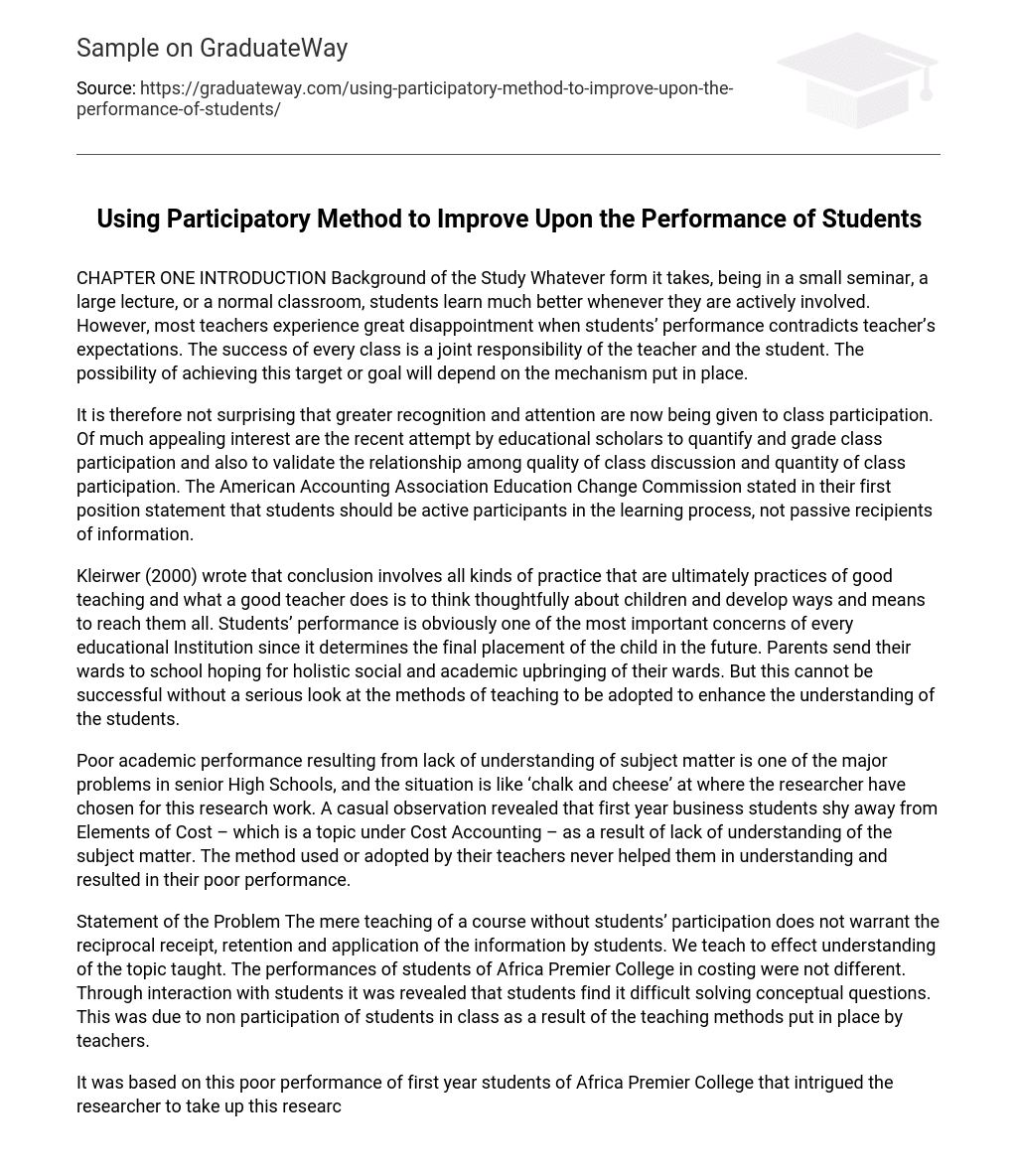CHAPTER ONE INTRODUCTION Background of the Study Whatever form it takes, being in a small seminar, a large lecture, or a normal classroom, students learn much better whenever they are actively involved. However, most teachers experience great disappointment when students’ performance contradicts teacher’s expectations. The success of every class is a joint responsibility of the teacher and the student. The possibility of achieving this target or goal will depend on the mechanism put in place.
It is therefore not surprising that greater recognition and attention are now being given to class participation. Of much appealing interest are the recent attempt by educational scholars to quantify and grade class participation and also to validate the relationship among quality of class discussion and quantity of class participation. The American Accounting Association Education Change Commission stated in their first position statement that students should be active participants in the learning process, not passive recipients of information.
Kleirwer (2000) wrote that conclusion involves all kinds of practice that are ultimately practices of good teaching and what a good teacher does is to think thoughtfully about children and develop ways and means to reach them all. Students’ performance is obviously one of the most important concerns of every educational Institution since it determines the final placement of the child in the future. Parents send their wards to school hoping for holistic social and academic upbringing of their wards. But this cannot be successful without a serious look at the methods of teaching to be adopted to enhance the understanding of the students.
Poor academic performance resulting from lack of understanding of subject matter is one of the major problems in senior High Schools, and the situation is like ‘chalk and cheese’ at where the researcher have chosen for this research work. A casual observation revealed that first year business students shy away from Elements of Cost – which is a topic under Cost Accounting – as a result of lack of understanding of the subject matter. The method used or adopted by their teachers never helped them in understanding and resulted in their poor performance.
Statement of the Problem The mere teaching of a course without students’ participation does not warrant the reciprocal receipt, retention and application of the information by students. We teach to effect understanding of the topic taught. The performances of students of Africa Premier College in costing were not different. Through interaction with students it was revealed that students find it difficult solving conceptual questions. This was due to non participation of students in class as a result of the teaching methods put in place by teachers.
It was based on this poor performance of first year students of Africa Premier College that intrigued the researcher to take up this research to use participatory to help improve upon the performance of business students in element of cost. Purpose of the Study The purpose of the study was to investigate how participatory method of teaching and learning could improve upon the poor performance of the first year students of Africa Premier College in elements of cost. The specific objectives were to: Find out the causes of poor performance of first year business students.
Identify appropriate strategies that could be used to solve the problem. Find out how the participatory methods of teaching and learning could be used to improve the performance of the second year business students. Give suggestions that would help improve upon students’ performance in elements of cost. Research Questions In trying to examine the specific objectives listed above, the following research questions were used. What are the causes of the poor performance of students? How will participatory method help to solve the problem? How will continuous practice improves students’ performance in elements of cost?





